If you’ve made up your mind to go to Buenos Aires, congratulations on a great decision. If you’re still debating whether to go or not, debate no longer, go! Spend a perfect 3 days in Buenos Aires.
Here is a Buenos Aires travel post full of tips and advice that will help you save time and money as you explore this exciting city and discover the best things to do in Buenos Aires.
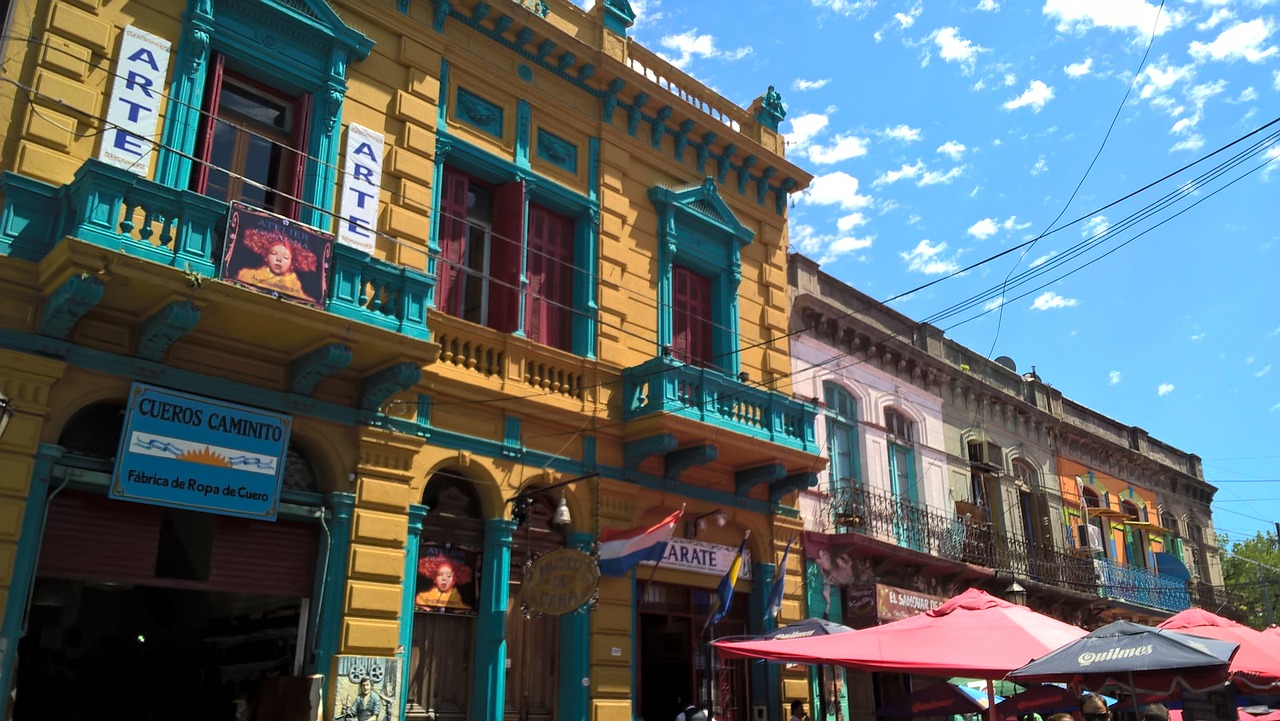
Table of Contents
ToggleBest Things To Do in Buenos Aires in 3 Days
While visitors are frequently drawn to Argentina by its breathtaking natural settings, they should also not miss our vibrant capital city, Buenos Aires.
Whatever your reason for visiting Argentina, you should set aside a minimum of several days to explore and enjoy Buenos Aires.
You’ll probably wish you had stayed longer by the time you depart, and you’ll be getting ready to return.
Engage with the “notables” in the city’s classic cafés
There are many well-known cafes in Buenos Aires; numerous have served as gathering places for notable people, including politicians, singers, writers, and actresses.
Because of their age, architectural design, or historical value, the City administration has designated them “Cafes Notables” (Remarkable cafés).
These cafés are a part of the city’s cultural legacy and symbolize the various neighborhoods.
These classic destinations and are a must-visit spot for many “Porteños” (people from the port city of Buenos Aires) and for visitors too during your 3 days in Buenos Aires.
Here is where locals have their daily “cortado” with medialunas (coffee with a croissant), sandwiches or churros, despite the numerous international cafe chains that have opened up shop all over the city.
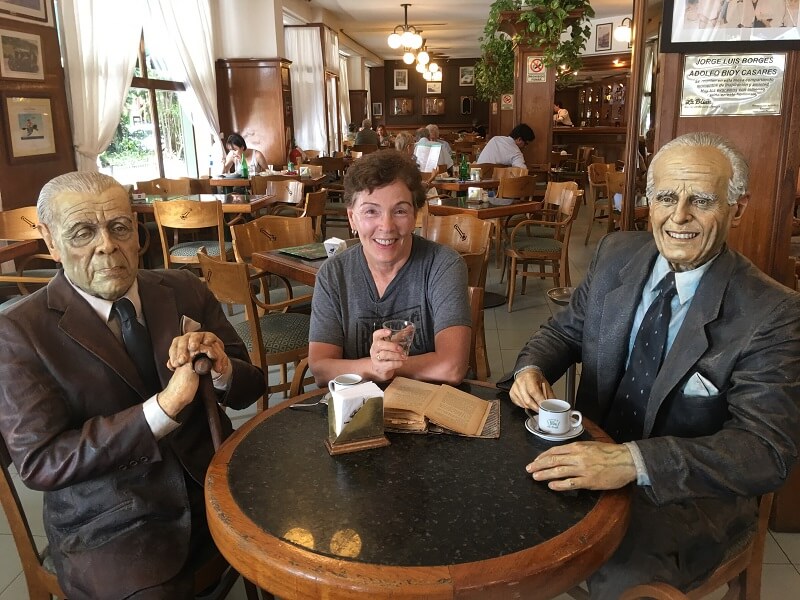
For some unknown reason, cafes in Argentina engage in the bizarre practice of posing wax figures of famous people sitting and having a drink in the café.
And for some even more unfathomable reason, I seem to be compelled to photograph myself in the company of these celebrated wax figurines; tourist-tack in the extreme but there you have it.
The most well-known are La Biela and Café Tortoni. But, there are other less famous but equally fantastic cafes that you should not miss. These include Confiteria Ideal, Bar Britanico, Café la Poesia, Las Violetas, Café Margot, and 36 Billares.
Since they’re all around the center of town, you’ll probably bump into one or the other while visiting the city. Just choose a couple and head to one of these iconic Buenos Aires landmarks for a memorable – and unique – treat!
Walk along Puente de la Mujer (Women’s Bridge)
Created by the internationally recognized Valencian artist Santiago Calatrava, this splendid pedestrian bridge, located in the Puerto Madero neighborhood was the first he created in in Latin America!
Built in 2001, the bridge spans the port’s late nineteenth-century docks and warehouses.
Since all the streets in Puerto Madero are named after important women in Argentine history, it makes sense that the bridge has that name.
Take a street art tour
Like in many other cities worldwide, Buenos Aires has seen a rise in the popularity of street art. I’m convinced street art is something that really improves the urban environment. Provided its cool street art, of course.
Famous Argentine and foreign artists have painted the entire city from north to south. You can see their art just about everywhere you turn in Buenos Aires.
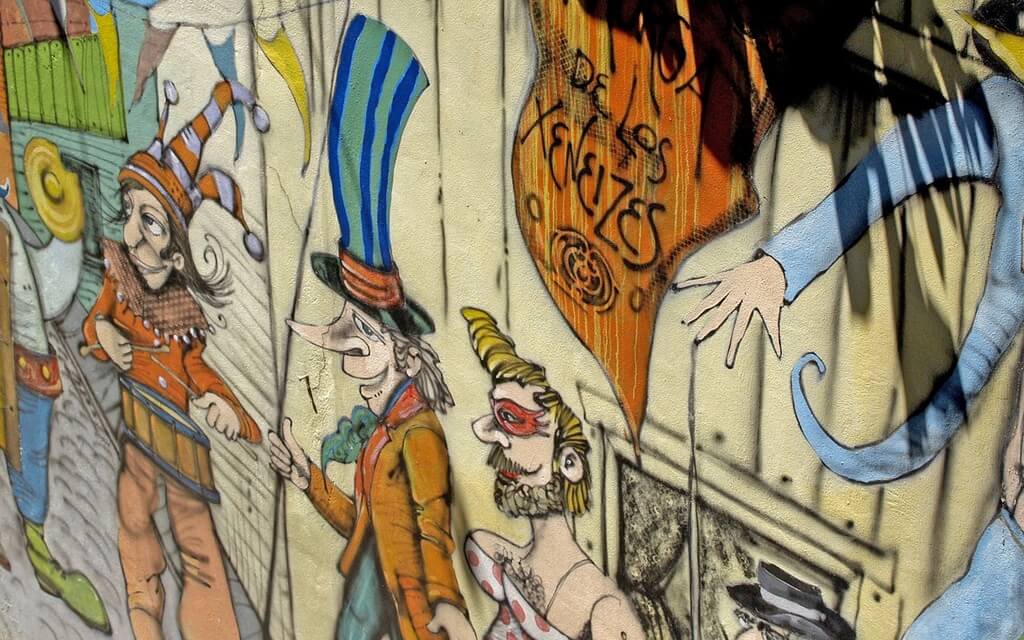
Visitors and residents alike love wandering along a “street art route,” an activity that has become increasingly popular.
The best way to experience the city’s street art is to take a street art tour. If you’re going to go alone, the best place to start is in the La Boca neighborhood.
If you want to explore the art in La Boca, take this cool Buenos Aires Street Art tour. You’ll get way off the beaten path while checking out some exceptional and seriously cool art.
Both ends of the city have a ton of murals and other art platforms that display the local flavor and reflect the social background of each neighborhood.
No 3 days in Buenos Aires is complete without a street art walk.
Bike or walk through the Reserva Ecológica Costanera Sur
The Reserva Ecológica Costanera Sur, which spans 350 hectares, is the most significant green area in Buenos Aires.
The park is perfect for strolling, picnicking, cycling, jogging, or simply hanging out. Go and take in the peaceful ambiance while sipping wine like a real Porteño!
This area was designated a Ramsar site in 2005 (wetlands of special significance.) It is made up of forests, meadows, lagoons, and marshes.
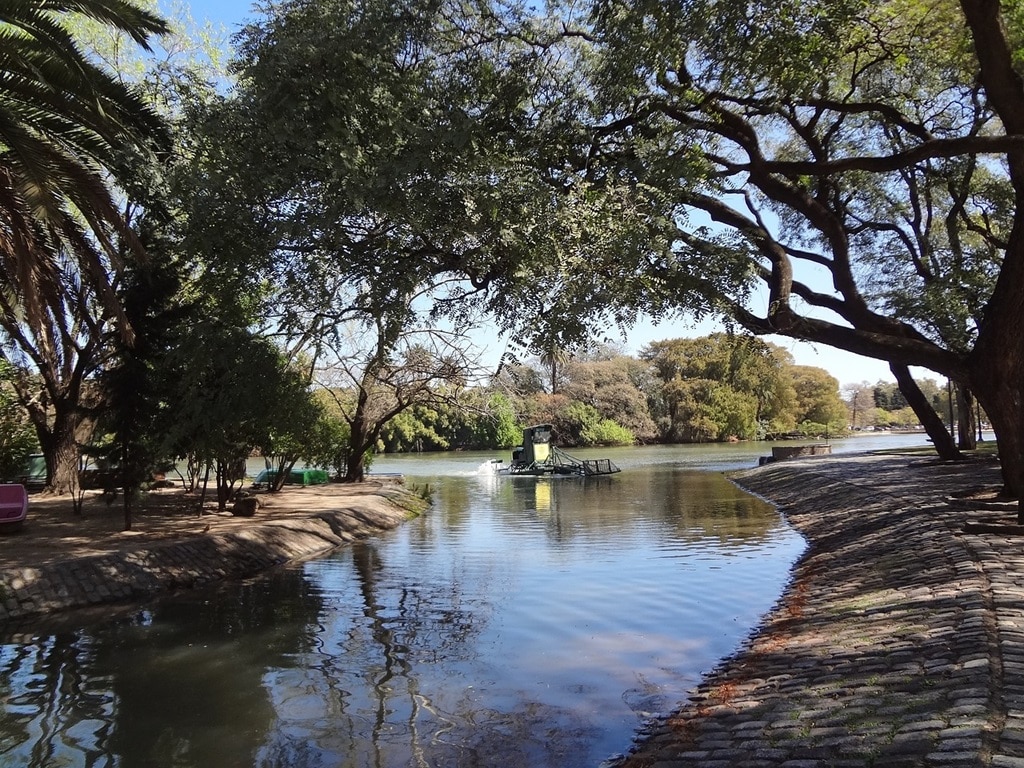
The Reserva is situated near the historic city center a short distance from Puerto Madero, so it is easily accessible.
On weekends, the entire neighborhood is packed. Families and other groups flock there. But on weekdays, you will have the spot to yourself.
Over 343 different bird species live in the Reserva. Bird watchers or anyone with a casual interest in local birds will appreciate this beautiful natural area.
Even in a short period of time, you may witness up to 50 different varieties of these stunning creatures. This abundance draws experts worldwide to the Ecological Reserve to observe.
The Reserve also provides spectacular views of the Río de la Plata. This is among the few locations where you can get a good view of the river.
Make time for tango during your 3 days in Buenos Aires
No 3 days in Buenos Aires are complete without a visit to a tango venue. Nothing embodies the sensual essence of Buenos Aires like the tango.
That’s why you must witness a performance or, better still, participate in one during your 3 days in Buenos Aires.
You’ll frequently see many tango dancers performing in the streets of La Boca and San Telmo, two of the more established (and touristy) barrios.
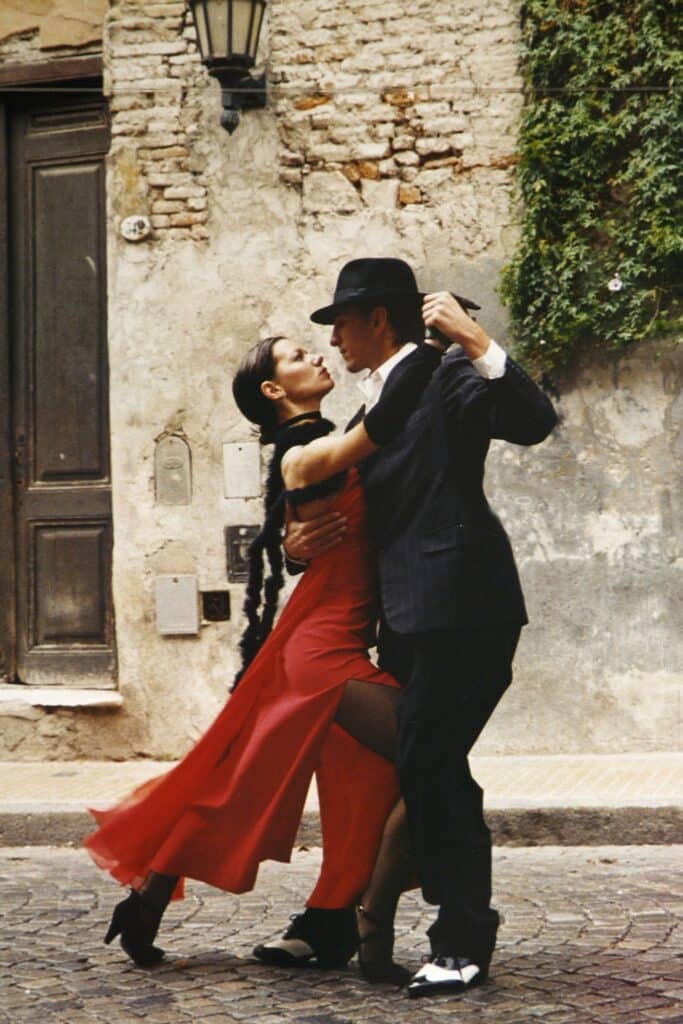
To fully appreciate this alluring art form, attend a live cabaret performance or get on the dance floor and perform it yourself. This is perfectly acceptable in Buenos Aires. Performers in many venues will pluck visitors from the audience to dance with.
A note on Tango shows: There are two types; the swanky, highly-polished shows primarily for tourists, and the neighborhood milonga, or dance hall.
Think of the touristy tango show as being for Buenos Aires what a Broadway show is for New York City, or a floor show is for Las Vegas; expensive, impressive, very sui generis to the city.
It’s the kind of place where you will either walk out singing its praises or saying to yourself, “well, that’s two hours I’ll never get back.” Personally, I loved it.
Then there are the milongas. These are local restaurant/dance venues where people congregate to dance, eat and drink, like a neighborhood bar.
Visit a milonga for the most authentic experience of the dance. The best places include Salón Canning in the trendy Palermo neighborhood and Milonga La Glorieta in Belgrano.
Some may be private, most welcome everyone and give tango lessons as well. Just ask your hotel concierge or just about anyone where to locate the local milonga. You’ll find milongas, all over the city.
Visit between 10pm and 2am (Buenos Aires, like Spain, is not known for early bedtimes) to witness couples of all ages performing this passionate and dramatic dance way into the night.
Both these venues may be worth experiencing to get another perspective on Argentine culture. It’s the perfect way to enjoy part of your three days in Buenos Aires like a local.
Insider tip: Seriously, don’t hesitate or be too shy to try the dance yourself. It’s one for the books.
Explore the Eclectic Markets
Visiting a market, also known as a feria, is one of the best things to do in Buenos Aires. It’s a terrific way to get a taste of the local way of life, meet the locals, and purchase some cool local stuff.
The most famous and bustling of the city’s markets is definitely the San Telmo fair (Feria de San Telmo) held on Sundays.
Numerous vendors get together and offer everything you can cart home with you including food, wine, artwork, antiques and even furniture.
You’ll find many impromptu performances by musicians and dancers as well. It is a lively and fun environment. A must on any three days in Buenos Aires.
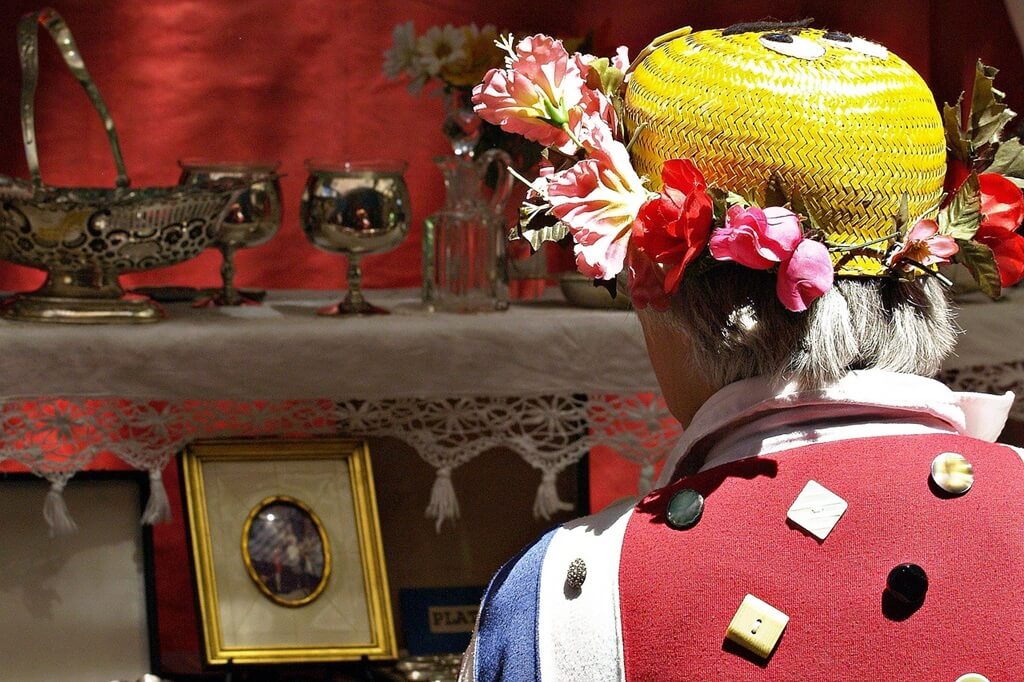
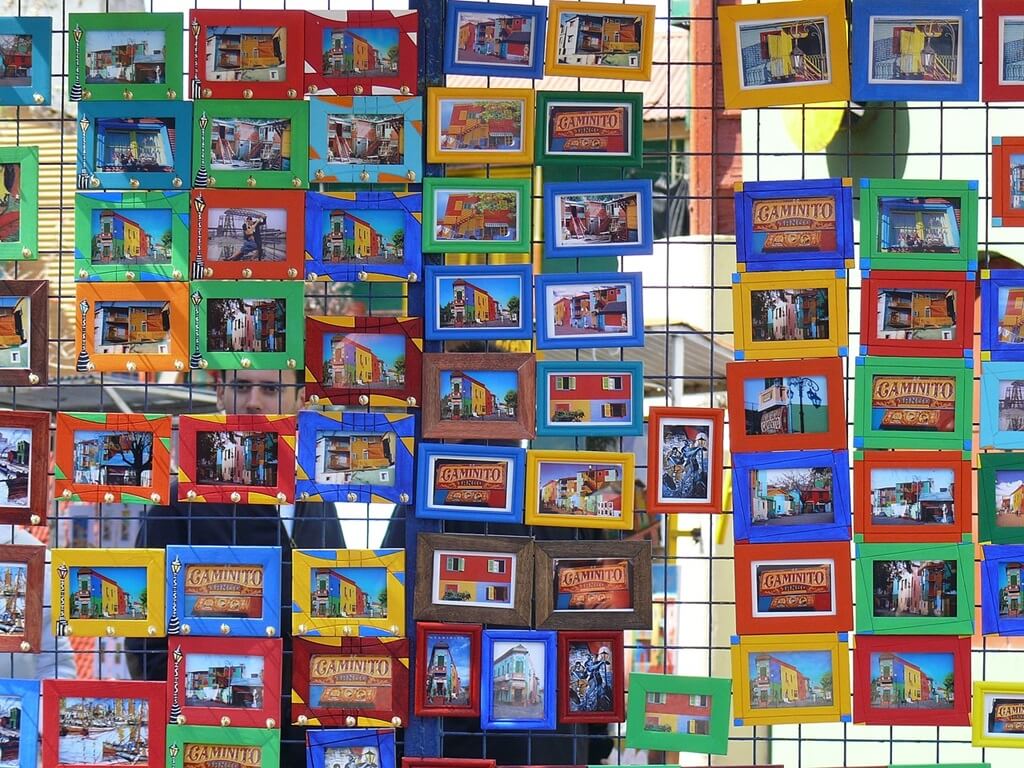
Book lovers will appreciate the Feria de Libros (book fair) at Parque Rivadavia. It is open daily with regional cuisine, live folk music and leather items.
Visiting the Feria de Mataderos, a typical gaucho fair, is also one of the best things to do in Buenos Aires.
Drink Argentine wines
Of course you’ve heard about the excellence fo Argentine wines.
The most famous wine in the country is Malbec; robust, dark, plum-flavored wine that has made the Mendoza wine region one of the most famous wine regions of the world.

Other regional wines are worth tasting at Argentina’s bodegas or wine cellars. These include red wines rich in berries, earthy pinot noirs, and crisp dry white wines.
If you’re looking for favorite Argentine wines, head to one of the 600+ wine stores and restaurants in Buenos Aires called vinotecas (wine boutiques).
Among the best are Lo de Joaquín Alberdi in Palermo, or Vinoteca in Aldo.
Insider tip: Of course the best way to enjoy and learn about Argentine wines is to book a wine tour with a pro.
Enjoy Buenos Aires’ folk music scene
Experience a bit of gaucho culture without leaving the city limits. Buenos Aires’ “peñas,” are local music clubs where the city’s musicians perform traditional songs as the crowd eats country-style meals.
The real fun starts when harmonicas and charangos (five-stringed guitars) come out for a group jam session following the performance. There are few folk music performances like it.
Get outdoors in the green city parks.
Need some downtime in a green space? Even in the middle of a cosmopolitan city like Buenos Aires, you can find natural beauty.
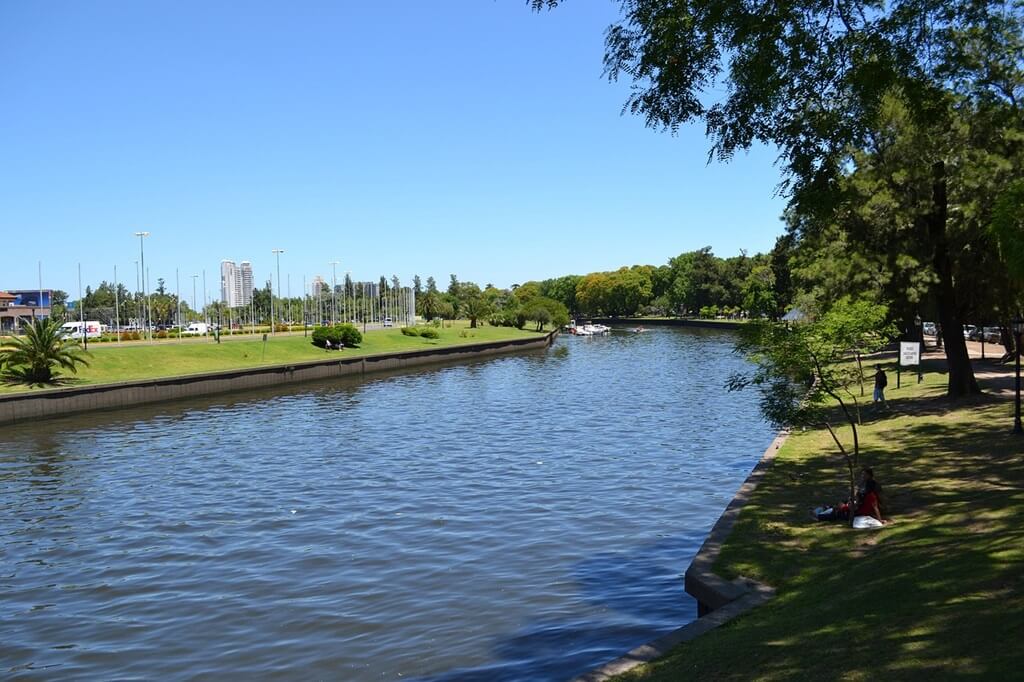
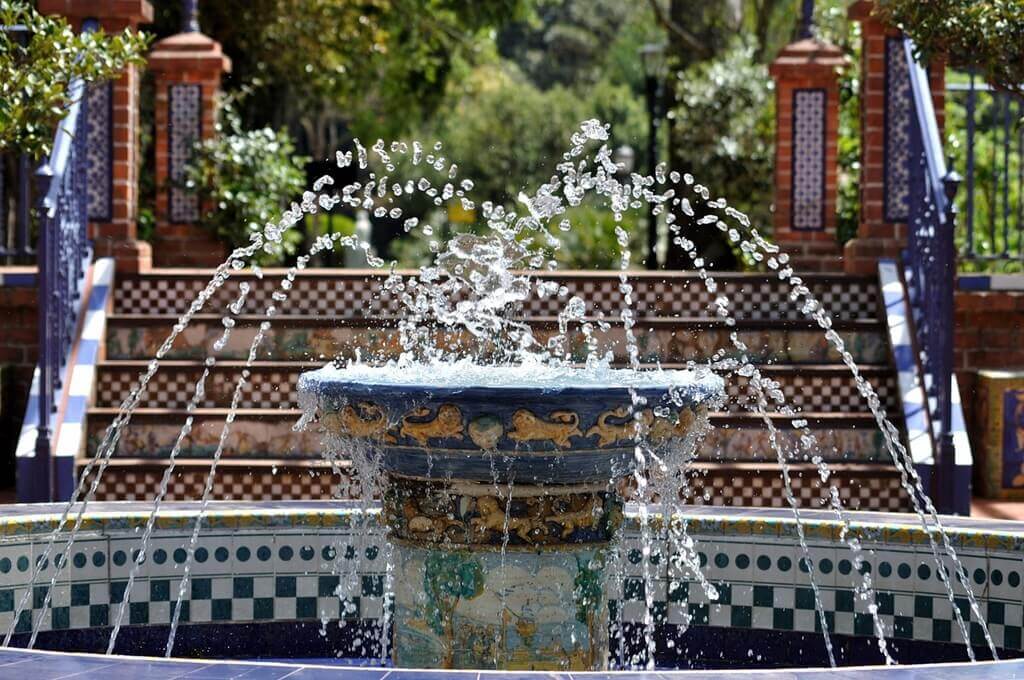
Pack a picnic lunch and chill for an afternoon in one of Buenos Aires’ bucolic parks.
Visit Parque Tres de Febrero in the Palermo neighborhood for fountains, rose gardens, and people-watching.
Another good option is Parque de la Memoria in Costanera Norte for picnics and great river views.
Insider tip: Typical picnic fare in Argentina is a bottle of Malbec and handful of beef and chicken empanadas. Any 3 days in Buenos Aires should include a picnic in a city park.
Play gaucho at an estancia on at least one of your 3 days in Buenos Aires
An estancia is a working ranch. There are many of these estancias on the outskirts of Buenos Aires. For another unique Buenos Aires experience, head to one of these estancias for the day.
Some of the coolest estancias in the vicinity of Buenos Aires will pick you up at your hotel and drive you out there. A day at an estancia is called a “dia de campo” or country day.
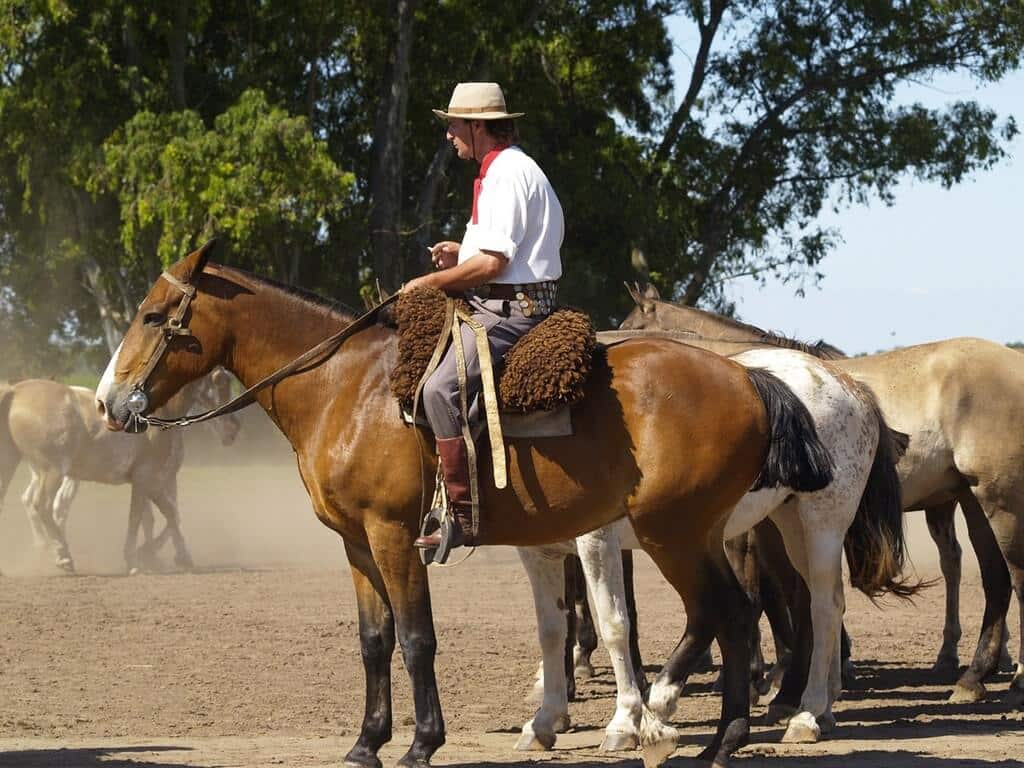
Your host will meet you with a lite snack. Then prepare for an eventful day including: horseback riding and a folk music performance.
Perhaps the best part of a dia de campo is the traditional asado, a traditional Argentine barbeque lunch with all the trimmings. Yummy!
Cap your day off with high-tea or a drink. These memories will remain in your mind as one of the best thing to do in Buenos Aires.
Explore Tigre’s River Delta
One of the best day trips from Buenos Aires is a visit to Tigre in the Paraná River Delta.
Tigre and the Paraná Delta are a labyrinthine system of waterways and tree-covered islands. The area offers watersports and nature trails.
There is even a relaxing island spa. All just a short train ride from Buenos Aires.
These tropical islands lie just one hour north of the center of Buenos Aires. Rent a river taxi or a private boat and go gliding through the many branches of the river.
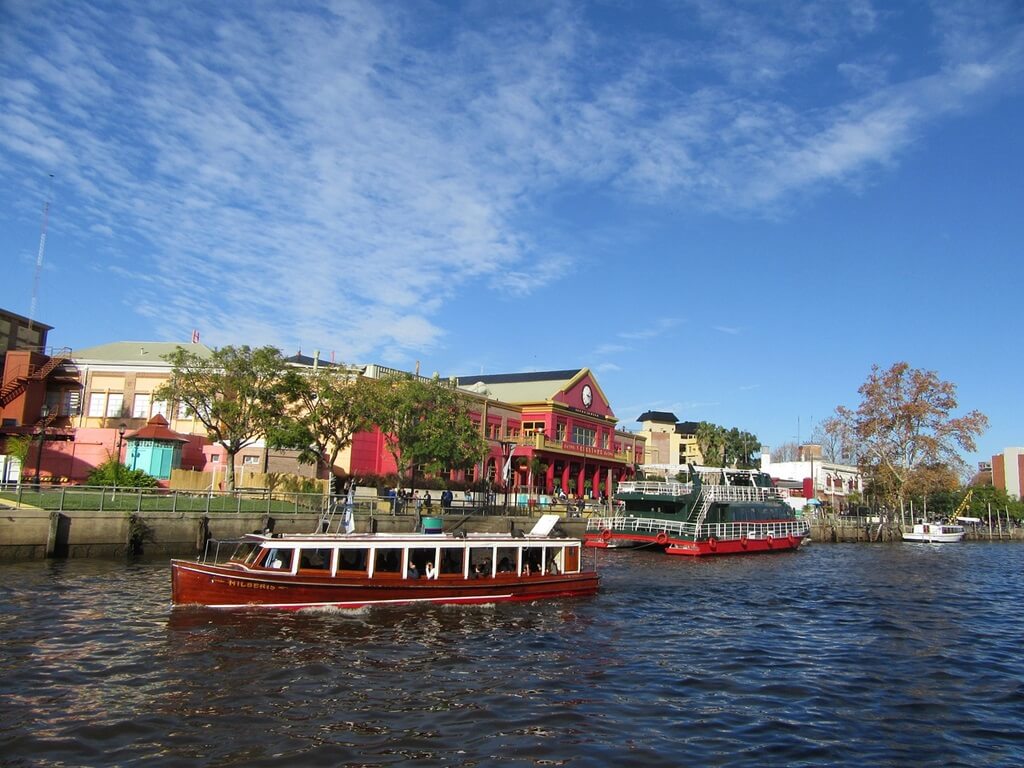
You can get to to Tigre from Retiro station by train. Once there, grab a water taxi, known as a “lancha” to Tres Bocas, the busiest of the islands in the chain.
You’ll see more because the water taxis, or lanchas, function more like a city bus with scheduled stops.
Regular passenger boats to the islands depart from Tigre.
There are a couple of restaurants in the area (don’t expect too much). You can get a bite there as well as wandering around the trails and exploring the stilt houses. It’s really quite extraordinary and unique.
The town of Tigre itself has a lot more fun activities including better restaurants, a casino and an amusement park.
Hire a private boat cruise to take you. Better still, take a day tour to Tigre and the the Parana River Delta.
Admire Buenos Aires from a rooftop bar
Want a cocktail with a view?
Similar to other cities like Madrid, Havana, New York and Barcelona, Buenos Aires has a very active life way above the city in its rooftop bars.
As the city has grown taller, its bar and cafe culture has followed the skyscrapers and hotels to the rooftops creating a vibrant rooftop bar culture. Be a part of it.
Some exciting rooftop bars include: The Sky Bar above Hotel Pulitzer, the rooftop cafe of Fundación Pro, and the elegant rooftop bar atop the Alvear Palace hotel.
Buenos Aires is one of the great cities for rooftop bar culture and enjoying it is one of the best things to do in Buenos Aires.
3 Days in Buenos Aires: Tips for Arriving in Buenos Aires
If you are arriving at the Ezieza International airport, you can buy a pre-paid taxi ride to downtown Buenos Aires – everyone calls the city, B.A. – at the taxi kiosk in the center of the airport. The cost is the equivalent of about US$45.00.
Alternatively, you can buy bus tickets at the Tienda Leon bus counter for about US$17.50.
The bus takes about 50 minutes and will leave you in downtown B.A. from where you can either take a taxi or the subway/metro which is called the “subte” short for subterranean.
Buenos Aires Travel: Money Tips and Advice
In most countries I am aware of, the exchange rate received from ATMs are usually the most competitive.
Not so in Argentina. We were surprised to see the exchange rate from an ATM to be quite poor.
This triggered a search for the best exchange rates for our three days in Buenos Aires.
The Casas de Cambio or, exchange houses, you find in the city seem to be the best option for exchanging currency, but they can be crowded with waiting times over an hour.
The nicer Casas de Cambio are in upscale shopping malls. The best Casa de Cambio we found was in the Galerias Pacifico mall on Florida Street.
Here there is only a short wait in pleasant, safe surroundings with respectable exchange rates.
Here is a fact that might surprise first-timers; not all banks change money. One bank that does is the Banco de la Nacion which reportedly has good rates.
Another option, although not recommended, is the arbolitos or, “little trees.” These are the people that line Florida street whispering offers to exchange currency or “green,” hence the name little trees.
Their rates are better, and people do use them, but a little voice inside you should yell, “no good can come of this.”
Many establishments do not accept credit cards so keep that in mind when you exchange funds.
Some establishments will accept cards but at a highly unfavorable rate. The difference between a charge on a credit card and the same charge in cash can be surprisingly wide.
The reason for merchants’ credit card aversion is the added tax they must pay for this transaction. US dollars are readily accepted in most places.
Paying in a strong currency like US dollars will get you the best price, just make sure you understand and agree to the rate BEFORE enacting a transaction.
This may take a little negotiation, but it is worth it.
Getting around in Buenos Aires
Taxis are plentiful and inexpensive. Before you decide to take a taxi, get a map and familiarize yourself with the principal routes of the city.
You may want to use google maps or maps.me (an offline mapping platform) to see where you are going.
This way you will know if the taxi driver is taking you in the wrong direction just to overcharge you. If that is the case, just complain and point to where you want to go on the map.
Tips and advice for making the most of your trip to Buenos Aires, Argentina Share on XThe underground transit system is efficient and easy to learn. It will take you most places worth going.
The best way to travel by metro is with a “SUBE” card. This is a credit card sized blue card you purchase at any kiosk in the city for about the equivalent of US$1.40.
The average subway ride within the city costs so little it is virtually free. Using public transportation is the best way to get around during your 3 days in Buenos Aires.
One of my favorite ways to get around a city, especially if it is my first time, is with a hop-on-hop-off bus. These buses take you to most of the important destinations.
You get off at any stop, visit your destination then hop back on.
Insider tip: If you sit in the top tier, make sure you have a hat as it can get hot.
Best Buenos Aires neighborhoods for your 3 days in BA
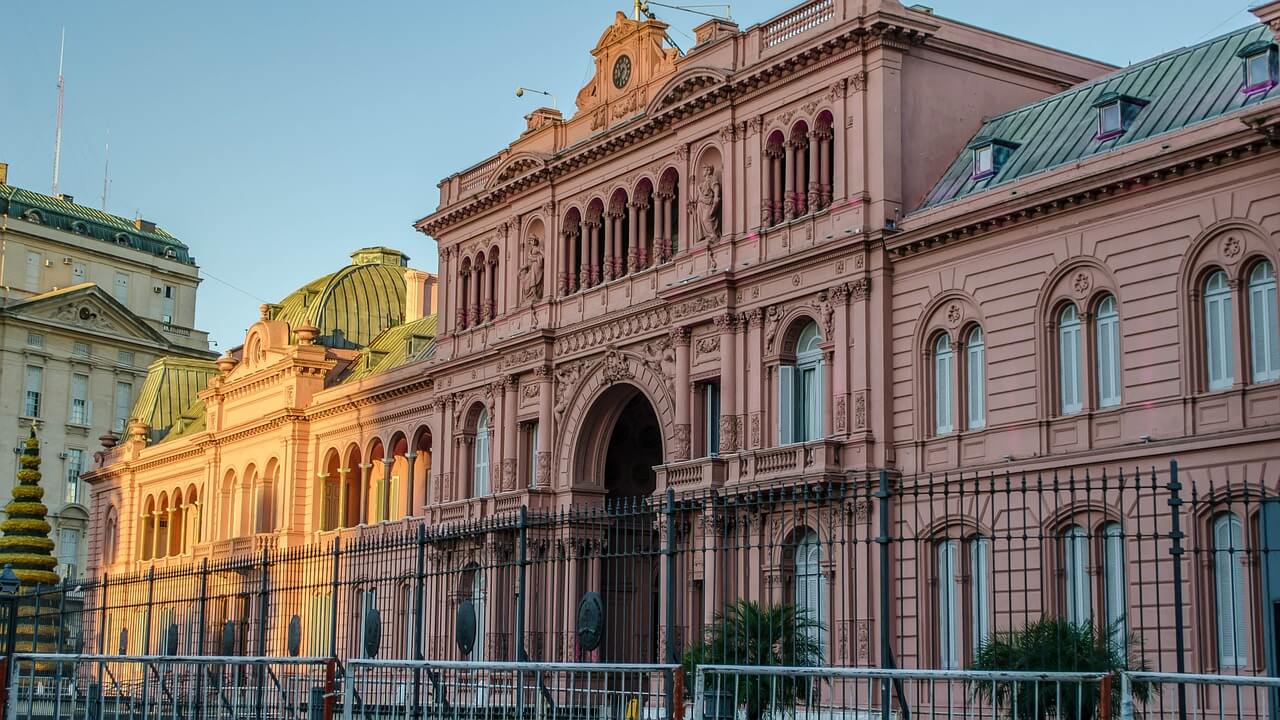
Three days in Buenos Aires are best enjoyed on foot. Pick a neighborhood and walk it; savor its restaurants and cafes, admire its architecture and absorb its atmosphere.
Each area has something special to offer. Here are some of the most interesting neighborhoods to visit.
Centro, Plaza del Mayo
This is the political and historical heart of the city, also called Centro. It is here where you find the seat of the government, Casa Rosada or pink house.
It is so named because of its color created when construction materials were mixed with oxblood.
It is from this balcony that Evita Peron gave her famous speeches as First Lady of Argentina.
The tours of Casa Rosada, weekends only, are worth it to see the inside of this interesting and historical structure.
Also, on the Plaza is the Metropolitan Cathedral famous as the parish of Pope Francis.
Nearby is the Cabildo, the former City Hall from where Argentina declared its right to independence from Spain, and the great, white obelisk built in celebration when independence was achieved.
As of this writing, the square was undergoing renovations, but it is still worth visiting.
Also on Avenida de Mayo is Palacio Barolo, an awesome and very strange building modeled after Dante’s Inferno. The view from the top is amazing.
Insider Tip: Save time and take a Buenos Aires city tour. Or go all out and get a private, knowedgeable guide for the day to customize your tour to what interests you the most.
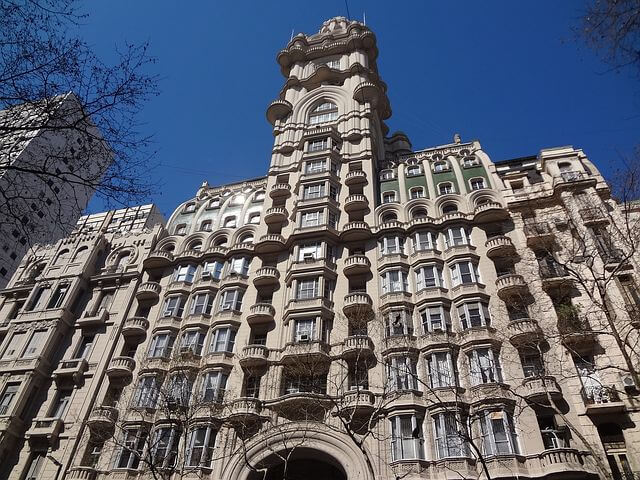
La Boca
La Boca is the oldest part of B.A., a port neighborhood where immigrants congregated before being assimilated into the greater B.A.
It is Argentina’s equivalent of old New York City’s Lower East Side.
It is a colorful neighborhood with houses painted in a multitude of bright colors by the local residents who used left-over paint from the passing ships.
In recent years it has become a bit of a tourist trap with overpriced restaurants, tango clubs and stores selling touristy t-shirts.
Still, it is unique to B.A. and worth seeing if only from the top of a hop-on-hop-off bus. It is recommended to visit Boca in the daytime rather than at night.
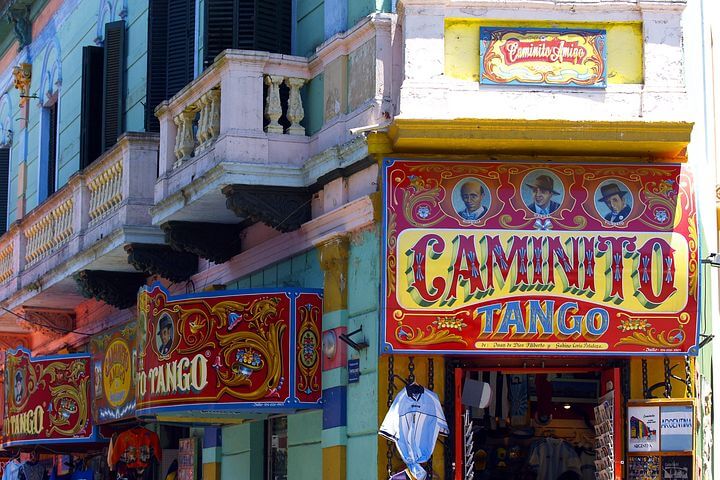
San Telmo
A charming neighborhood with cobblestone streets, quirky antique shops and unique little bistros tucked into narrow alleys and sun-splashed plazas.
The big draw in San Telmo, however, is the Saturday antique market.
The stalls selling every imaginable antique go on seemingly for miles.
By all accounts, these are real antiques, some older than the country itself and many stunningly beautiful.
Expect to spend quite a bit of time here. If you are into antiques, you won’t be able to tear yourself away.
If you can only visit one neighborhood during your three days in Buenos Aires, this should be the one!
San Telmo is also famous for delighting foodies. Make sure to explore the food scene in SanTelmo with a food tour.
La Recoleta
This is the upscale neighborhood famous for stately homes and one of the world’s most interesting and beautiful cemeteries of the same name.
In fact, La Recoleta Cemetery is so renowned it is considered one of the most important and visited tourist attractions. Indeed, it is one of the most famous cemeteries in Latin America.
One of the biggest draws in La Recoleta is the tomb of Eva Maria Duarte de Peron, otherwise known as EVITA! Eva Peron was an illegitimate child born in an Argentine backwater.
At 15 she left home for the big city to pursue an acting career. Shortly thereafter she met and married Juan Peron who would go on to become president of Argentina.
Evita herself became very popular with the workers of Argentina electrifying audiences with her fiery speeches from the balcony of La Casa Rosada, the executive mansion and office of the President of Argentina.
Many Argentines revered her, granting her an almost goddess status. At 33 she died of cancer. Her grave always has flowers.
Take a Recoleta cemetery tour to really appreciate this magnicicent necropolis. This is a must-see on your 3 days in Buenos Aires itinerary.
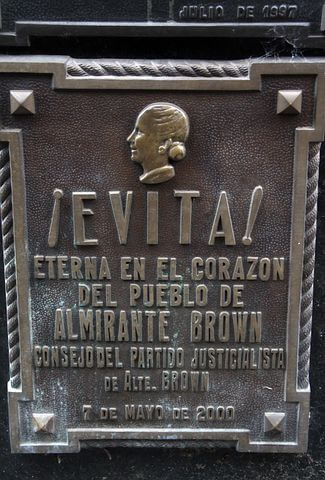
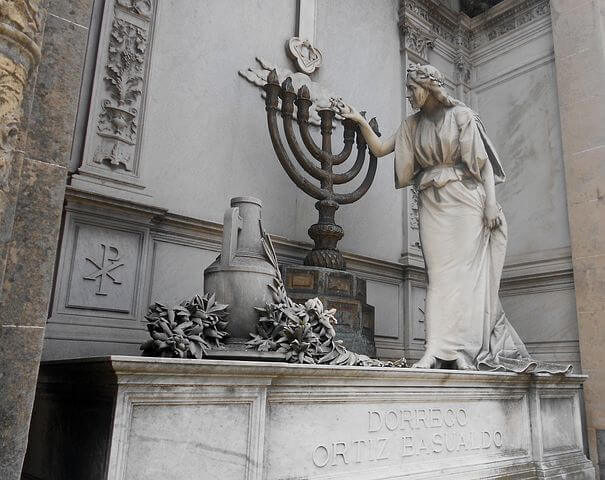
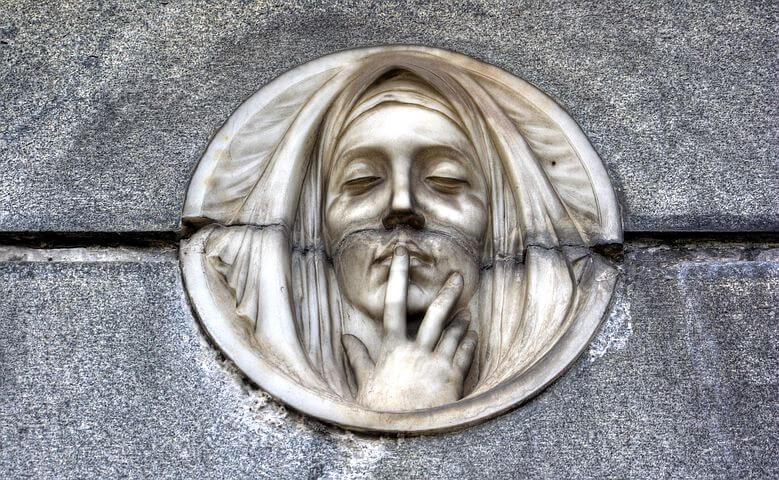
Recoleta is also home to the Museo de Bellas Artes or Museum of Fine Arts, with its extensive permanent collection of classic and contemporary art as well as special exhibits by world-class artists.
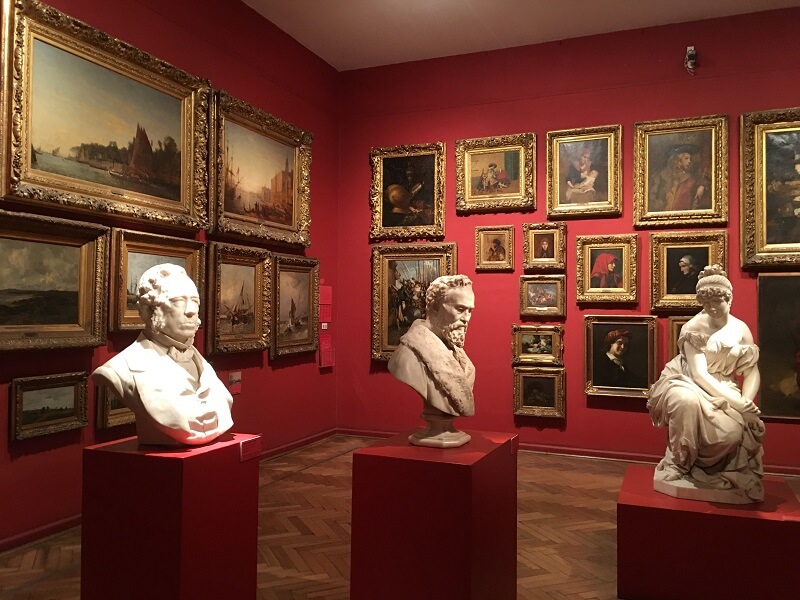
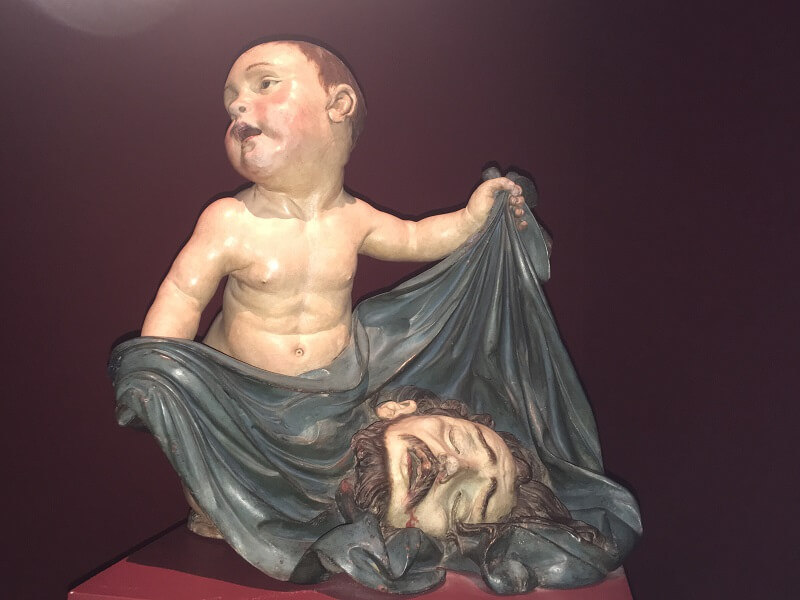
Palermo
Palermo, named after the capital of Sicily, is the largest neighborhood and is itself divided into smaller neighborhoods such as trendy Soho and Canitas.
The area is full of excellent restaurants, boutique shopping, and galleries.
The Museum of Latin American Art (MALBA) in Buenos Aires is also in Palermo. It houses world-renowned collections from Mexico to Argentina.
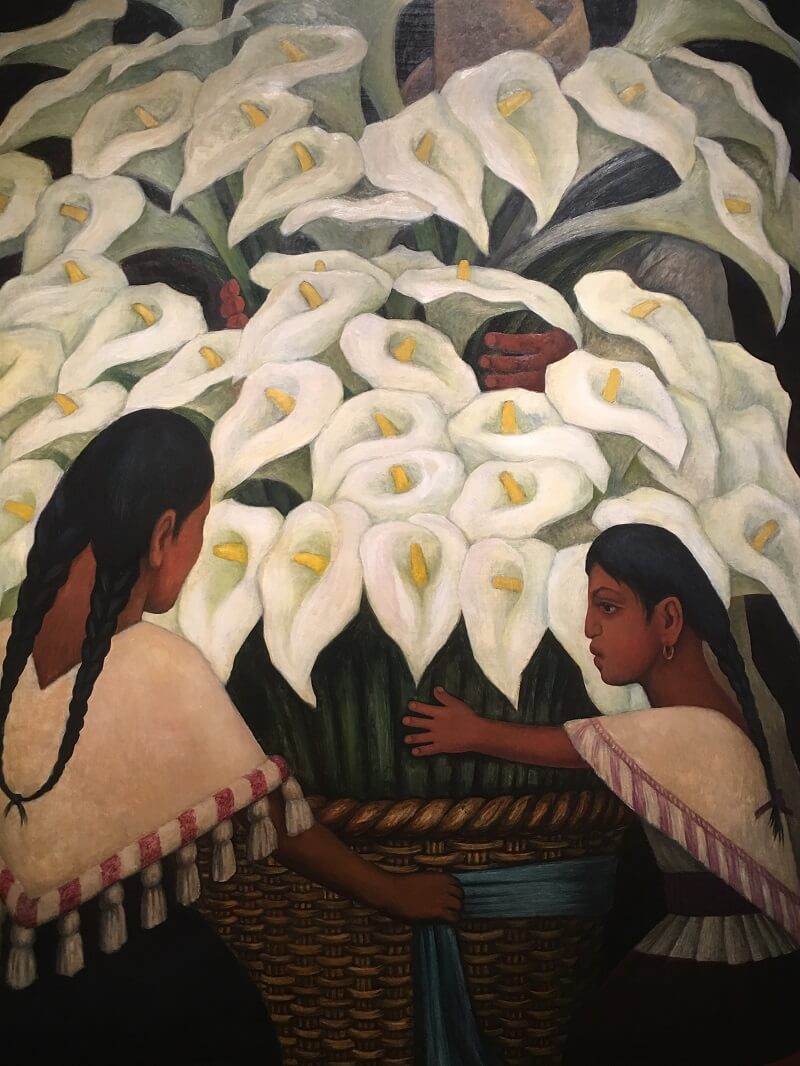
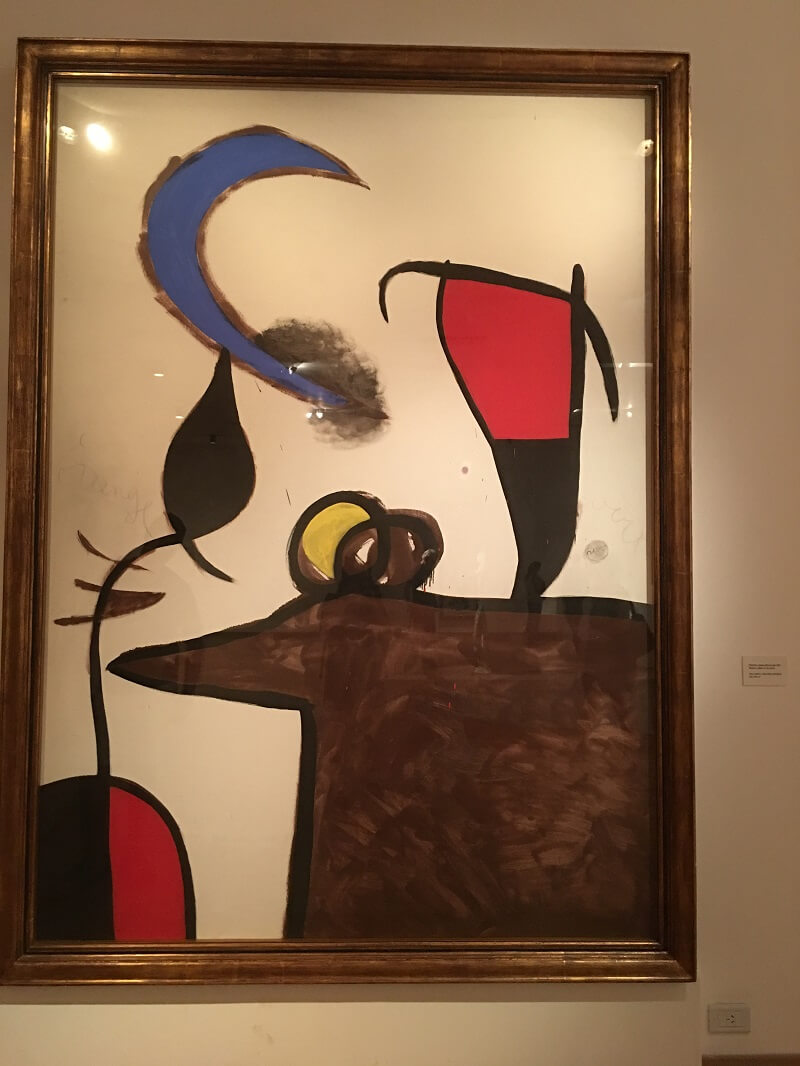
Puerto Maduro
As the name implies, Puerto Maduro is the area next to the port of Buenos Aires. This area has recently enjoyed a much-needed facelift.
The old warehouses have been transformed into trendy, high-ceiling restaurants and stylish shops.
Knowing where to stay during your 3 days in Buenos Aires will help you maximize your time.
Buenos Aires travel guide to eating and drinking
The best way to spend 3 days in Buenos Aires is to eat your way through the city. If you are a meat lover, this is your nirvana.
Here you can experience every imaginable cut of meat; all good, perfectly seasoned and reasonably priced.
The meats are usually accompanied by salads and potatoes. The other tasty little treat that you must try is an empanada.
Empanadas are pastries stuffed with beef, chicken, spinach and/or cheese. They make for a quick bite with a beer, an appetizer or a full meal.


For lunch, a good bet is the “menu of the day” similar to what you see in many European countries.
The menu of the day usually consists of an appetizer, main course, dessert and a beverage for a competitive fixed price.
Neighborhood restaurants will place a sign outside their door at lunchtime advertising the day’s menu and the price. It is a good way to charge your batteries for the rest of the day.
Dinner is eaten late in B.A., although not as late as it was some years ago.
You will now see restaurants filling up at 8 pm whereas it used to be some places didn’t even open for dinner until 10 pm.
Save time and combine a food tour with a Buenos Aires city tour.
The old saying that the wine is cheaper than the water in Argentina is true, depending on the wine, of course. Another Argentine saying is, “A meal without wine is breakfast.” Share on XThe country exports some of the finest Malbec and Sauvignon in the world.
Wine is an important part of the culture, and you would be hard-pressed to get a bad bottle of wine anywhere in the country.
Read more about the great wine regions of the world.
Best Time To Go to Buenos Aires
What time of year is ideal for travel to Buenos Aires?
Whether you like the oppressive summer heat, the chilly winter months, or the comfortable transitional days between fall and spring will determine your preference. Remember that when it’s winter in the northern hemisphere, it’s summer in Argentina.
This cosmopolitan port city has a packed schedule all year, with events ranging from rock concerts and tango competitions to exuberant gaucho (cowboy) celebrations.
Due to school holidays and the warmest summer weather, it can get hectic around Christmas and New Year’s.
December-February is the best time for Sun Seekers.
Buenos Aires experiences a scorching summer in the southern hemisphere, with typical daily highs of 30°C (86°F).
Any native of Buenos Aires, known as a porteño, will tell you that the humidity adds to the heat. Intense thunderstorms and heavy rain frequently break prolonged heat spells for several days.
Since this is the busiest travel season, hotels are full and charging hefty rates to match. If your budget allows, make reservations at a hotel with a pool.
On sweltering summer days in Buenos Aires, nothing compares to cooling off in the water after a day of touring.
March-May and September-November are the most pleasant times to explore.
Most travelers discover that the best seasons to visit Buenos Aires are fall (March to May) and spring (September to November). The average temperature is roughly 22°C (72°F), with sunny and cloudy days.
The weather usually is moderate. The ideal time to discover cheap hotel rates is between April and June when occupancy rates are often at their lowest.
June-August is the best time for low prices and crisp winter days.
Buenos Aires experiences cloudy, chilly winters with average highs of 16°C (61°F) and lows of 8°C (46°F).
Even though it could rain anytime, winter usually brings dry weather and bright days, ideal for touring the city.
During the summer holidays in the northern hemisphere, July and August see a little increase in the number of visitors.
January sees locals and visitors hit the beach.
Buenos Aires celebrates its summer holidays in the first month of the year. Schools are closed, and many porteños take time off work to visit the beach and escape the city’s oppressive heat.
Booking accommodations in advance is advised because this is the busiest time of year for tourists in the city, even though the city and traffic usually are calmer.
Day Trips from Buenos Aires
As Argentina’s primary transportation hub, Buenos Aires not only offers an abundance of attractions to occupy your time. It also makes an ideal starting point for day travel into the provinces and other parts of the nation.
Various activities are easily accessible from the city such as water sports on the river delta and horseback riding in the expansive countryside. Try to spend at least one of your three days in Buenos Aires in the surrounding area.
Tigre and the River Delta
As mentioned above, a trip to Tigre and the River Delta is one of the best things to do in Buenos Aires.
You can book a half day tour to Tigre here if you don’t have time for a full day.
La Plata
Established in 1870, La Plata is laid out in a neat grid with a square or park every six blocks.
The city has earned the moniker “City of Diagonals” because diagonal streets regularly meet consecutively numbered horizontal and vertical streets.
Because so many deciduous trees are lining the streets, the city is also occasionally called the “City of Linden Trees.”
The German Renaissance city hall and the neo-gothic cathedral are two of the city’s attractions.
San Antonio de Areco
The vast, level pampas terrain stretches beyond the city’s immediate environs.
Many estancias in and around San Antonio de Areco host “gaucho days,” honoring traditional horseback riding skills and frequently offering guests the opportunity to ride themselves before enjoying a traditional asado.
The charming old town center of San Antonio features a gaucho museum (Museo Gauchesco Ricardo Güiraldes), a few classic eateries, and cobblestone lanes that appear to have barely changed in a century.
Colonia del Sacramento, Uruguay
Just a short hop across the Rio de la Plata river in Uruguay lies this charming 17th-century colonial hamlet with cobblestone walkways and blooming bougainvillea.
The old quarter is still laid-back and recognized as a UNESCO World Heritage Site. This place is amazing. Take a day trip tour to Colonia del Sacramento and save time.
You can stroll around the parks and streets or stop by the historic lighthouse and witness the entrance to the historic fort.
Three firms provide regular ferry crossings from Buenos Aires: Buquebus, Colonia Express, and Seacat.
Temaiken Biopark
Temaiken, a park in Escobar to the north of the city, features displays of local Argentine species along with the big cats, hippos, and lemurs, among other creatures.
Compared to conventional zoos, it focuses on education and conservation. The Buenos Aires city center is served by public bus number 60, which goes there.
Luján
Luján, a religious pilgrimage site only 68 kilometers from the city, has many mysteries worth learning. The magnificent Basílica Nacional, built in the Gothic style, is the main attraction.
It honors the Virgin of Luján, the patron saint of Argentina, and receives millions of pilgrims every year.
Set against the picturesque backdrop of the Luján River, the Gothic architecture of the cathedral stands in stark contrast to the colonial design of the largest museum complex in Latin America.
That’s the Complejo Museográfico Enrique Udaondo, which houses the Museum of Transport and the Colonial Museum.
Visitors can enjoy horseback riding, lots of traditional cuisine in the surrounding area, and days spent in the countryside at conventional estancias.
San Fernando
San Fernando, which combines history and nature, is 30 km north of the city and less than an hour’s ride away by train on the route to Tigre.
One of the highlights is the Sans Souci Palace, which features neoclassical French architecture that was influenced by the Palace of Versailles. It was constructed by architect René Sergent between 1914 and 1918.
Other notable architectural structures are the neo-Roman Parroquia Aránzazu and the romantic Palacio Belgrano, which resembles a castle.
In addition to the islands, visitors to San Fernando can spend time in the Paraná Delta Biosphere Reserve. This reserve is more than 85,000 hectares and is home to numerous ecotourism and sustainable agricultural initiatives.
It is also home to many native species like marsh deer and those cute little capybaras.
Rosario
Rosario is the third-largest city in Argentina. It is the birthplace of soccer player Lionel Messi and revolutionary leader Ernesto “Che” Guevara. A new train route from Buenos Aires is now serving Rosario.
The city features a sizable monument honoring the spot where the Argentine flag was first flown during the country’s battle for independence.
It boasts a beach, excellent seafood restaurants, and a diverse cultural environment because of its location on the Paraná River.
…and beyond
If you have more time, go to the coast. Buenos Aires inhabitants’ preferred vacation spot for many years was Mar del Plata.
The beach is considerably more laid-back outside of the busiest times of the year, which are the January and February school summer vacations.
Try Pinamar and Mar de Las Pampas for smaller, more laid-back seaside communities.
Many businesses host sporting events, and if you’ve had your fill of excitement, you may have some of the renowned charcuterie in the city. Regular buses depart from the Retiro bus station.
If you like Argentina, you’ll be interested in these posts as well.
- STRAIT OF MAGELLAN CRUISE WITH CAPE HORN
- HOW TO GET TO PATAGONIA (UNIQUE ROAD TRIPS IN PATAGONIA)
- TORRES DEL PAINE NATIONAL PARK AND PUERTO NATALES
- THINGS TO DO IN USHUAIA, ARGENTINA: THE END OF THE WORLD
Like one of the city’s fine Malbecs, Buenos Aires is to be savored.
This city has something for everyone. I hope the tips and advice in this 3 days in Buenos Aires travel guide will make it easier to navigate this wonderful city.
Don’t forget these travel reference books to get the most out of your 3 days in Buenos Aires.
What city that you have visited surpassed your expectations? How would you spend three days in Buenos Aires?
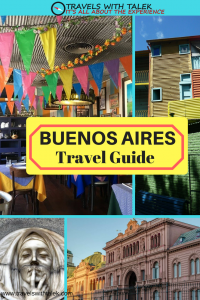

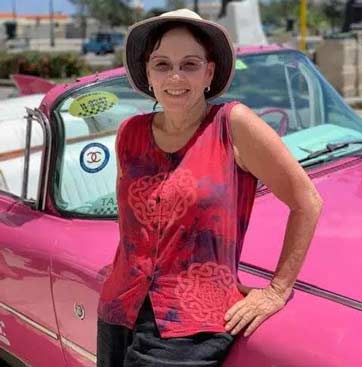















19 Responses
I’ve been debating going to Buenos Aires for about a month now! Thank you so much for this info on the city. The hunt for a cheap flight begins!
You will like it but make sure to get out of the city as well. For cheap flights, check out my post on “Cheap flights, how to find them, how to book them.” Thank you for commenting.
It’s on my list. I’m currently in Medellin. Your post gives me a little inspiration to visit but so much world to see! 🙂
BA is definitely worth a visit but Medellin is not too shabby either. Enjoy and thank you for your comment.
Great one, I think you covered many of the main points and spots about the city. I fell in love with the city long time ago, and, well… never left; http://becci.dk/2017/07/02/love-buenos-aires-argentina/
Thus, just one thing; the SUBE card is not only the best way to get around in Subte, bus, and train – but also the only way 😉 No coins accepted anymore.
Thanks for sharing!
haha.. those wax figurines are a nice concept 😀 Me being a solo traveler I will be happy to share my table with a celebrity like that and have some nice coffee.. 😀
lol. yes, they have these figurines everywhere. it’s really a lot of fun. thank you for reading.
You have wonderful tips! While I was reading it, I had a feeling like I’m there right now!
Thank you! That is one of the nicest compliments a writer can ever receive.
This place is in my alley and I would certainly want to visit neighborhoods of buenos.. looks so relaxing place to visit.
Yes, it is relaxing but also exciting. I think you will enjoy it. Thank you for commenting.
My wife has wanted to go to Iguazu Falls. I figured BA would be an obvious place to go as well on that trip. Any experience or tips on connecting those two?
Your best bet is to take one of dozens of tours from BA to Iguazu. Your wife is right. If you are in BA you might as well make it to Iguazu while you’re there.
Many thanks for this article about BuenosAires.
The city is really nice and worth visiting. In case you have a little bit more time, then a day-trip to “Tigre” is recommendable (approx. 45mins by train).
Perhaps is our navigation system for the BA metro (subway) useful as well for first time visitors:
https://www.metrocazar.com/buenosaires/
Actually I DID go to Tigre but it was a rainy day and I didn’t get to see too much. But the city itself will always be a fascinating place.
Great Post!!! I truly believe that there is much more to explore new places. The world has incredible beauty which makes us visit new places for sure.
Thanks, Alex! That’s always good to hear. I am glad you enjoyed it and hope it provided useful information for a future trip.
nice blog
Thank you. I hope you found it useful.